Pakistan, the world's fourth largest producer of cotton is also one of the primeval homes of cultured cotton. Over the period of years Pakistan has shifted from a primary produce of raw cotton to exporter of value-added merchandise. The importance of textile in our economy is eminent from the fact that about 67 percent of Pakistan's exports are textiles.
The World Trade Organisation (WTO) regime that went into effect from 1st January 2005 provides a tough challenge for Pakistani Textile Industry but at the same time it will be a great opportunity for Pakistan to create a niche for its products in the global markets.
As the world trade has moved towards greater liberalisation our Country's business community needs to prepare itself to meet the newly emerging challenges in this field. Quota elimination will be accompanied by a significant enhancement of trade and market access opportunities, from which the more efficient exporters, enjoying economies of scale would stand to benefit the most.
SWOT ANALYSIS OF THE PAKISTAN'S TEXTILE INDUSTRY STRENGTHS:
1. World's fourth largest producer of high quality cotton.
2. Reach of textile products to almost all countries in the world.
3. Recognition of high quality in the global market.
4. Cost efficiency.
5. Vertically integrated textile mills.
6. Recent development of new sea ports.
WEAKNESSES:
1. High transit time to North America and Europe. 3-5 weeks.
2. Poor perception of Pakistani Textile goods in the United States and other western Countries.
3. Weak industrial infrastructure.
4. Absence of middle management or weak middle management.
5. Lack of skilled and trained work-force.
6. Presence of only a handful of sea carriers.
7. Lack of production capacities in order to fullfill the growing global demand.
8. The exporters/industrialists often lack proper understanding about the mechanics of WTO Laws, different regulatory, monetary and Fiscal Government incentive packages and schemes.
9. The image of Pakistani products in the international markets is adversely affected due to poor representation and mismanagement in the international trade fairs.
10. Customs duty on saw gin blades prevents the availability of quality ginned cotton.
11. Currently, textile exports are highly concentrated in a few product categories and to limited number of markets.
12. Value added sectors like stitching and processing need to be developed on priority basis. Processing is the weakest link in the entire value chain. This results in lack of quality raw material for garments and made-ups industry.
13. Absence of a system to continuously monitor and revise Minimum export prices to protect any anti-dumping and countervailing duties.
OPPORTUNITIES:
1. Establish strategic alliances with major US and European importers.
2. The demise of major American Textile manufacturers, hence the shifting of sourcing from local manufacturing to overseas manufacturers.
3. 20 billion dollars worth of US Home Textiles market.
4. Safe-guard provisions on China in place until 2008.
5. Huge Size and demand of the American textile market.
6. Establish facilities to provide LDP facilities to foreign customers.
THREATS:
1. Increase in non-tariff barriers like anti-dumping & countervailing duties.
2. Cheaper imports from other countries that have preferential textile agreements with US and the EU.
3. Pakistan's Textiles and clothing sector's graduation out of the GSP regime.
4. Law & order situation discouraging foreign buyers/customers to visit the Country.
5. Social & Environmental compliance demands of foreign customers.
6. Currently the industry has to deal with numerous labour departments such as Social Security, EOBI, and Education Cess etc to collect labour levies. This results in waste of resources and precious man-hours. Alternatively there can one single agency to collect all these levies.
7. Future increase in local interest rate for working capital financing would lead to increased overall costs of the Final product.
The Opportunity for Pakistani Home Textiles in the United States
The US home textile industry has exhibited sales growth in most product categories between 1997 and 2004. This upward trend benefited from a strong housing market, which has traditionally been a primary driver for consumer expenditures on home fashions products.
The US market for home textiles consists of the residential and institutional markets. US consumer spending on home textiles has grown faster than overall consumer spending in recent years. The growth in consumer spending on home textiles, which in 2003 totalled $20 billion, or 0.6 percent of overall consumer spending, reflects favourable economic trends.
Similarly, the home textile market benefited from favourable demographics, including the baby boomers (those born between 1946 and 1964) are now spending more time at home and seeking to make their homes more comfortable, known as the "cocooning effect." Baby boomers account for most of the households headed by persons aged 35-64, which represent the largest group of households in the United States (42 percent of the 2001 total) and have the highest income.
As consumers have become more value-and time-conscious in recent years, they have spent less time shopping and have changed where they shop for home textiles. Major beneficiaries of the trend are the mass merchants, which offer a wide range of basic goods at competitive prices; specialty stores, which offer one-stop shopping to consumers looking for product differentiation and diversification; and catalog houses, which offer convenience. The share of the US home textile market accounted for by the mass merchants include Wal-Mart Stores Inc, J.C. Penney, Target a subsidiary of Dayton Hudson - Bed, Bath, & Beyond, Inc and Linens'n Things, Inc etc the US home textile industry historically has focused on marketing its products in the United States, the world's largest single-country market for home textiles. The "new news" about globalisation is that the price, comparative productivity, exchange rates, transportation costs and tariffs will continue to affect patterns of sourcing; a new set of factors related to the distribution of products plays an increasingly important role.
Most of the North American producers search for ways to decrease their production costs.
THE MOST POPULAR ONES ARE:
1. Go offshore for production or contract with ones that have lower labour costs, even though their transportation cost and lead times are higher than for local producers.
2. Joint venture with a foreign producer/manufacturer in home country in order to benefit from the competitive advantage of the foreign producer.
AREAS NEEDING IMMEDIATE ATTENTION:
1. Identifying the Target Sectors: We need to identify the textile sectors where currently we have a competitive edge and the potential to grow in years to come.
2. Increase the labour productivity by means of education, on job-training and skills up-gradation.
3. Measures to insure compliance with environmental and social standards like SA 8000 etc.
4. Measures to improve organisation and management of export oriented textile companies, many of which are family owned and managed.
5. Measures to attract foreign investment in textile sector by means of joint-ventures in Pakistan.
6. Measures to improve the overall infrastructure including cutting down long delays in shipments and clearances and cargo space handling, reliable and low cost supply of power, water and telecommunication, and long-term financing by the financial institutions.
7. A careful review of the existing WTO laws has to be made to ensure compliance with the WTO's legislative requirements. This will provide mechanism to deal with issues like anti-dumping and countervailing duties.
8. Enhancing capacities: We need to focus on enhancing our capacities to meet the up-coming challenges of Global Supply and Demand. For example in China the spinning capacity increased from 18 million spindles in 1980 to 55 million spindles in 2002-2003.
9. Minimised lead times for products to reach the shelves.
10. Accurate and reliable order promising and due date quotations from channel distributors.
BR100
15,059
Decreased By
-56.5 (-0.37%)
BR30
42,931
Decreased By
-117.2 (-0.27%)
KSE100
148,815
Decreased By
-677.8 (-0.45%)
KSE30
45,206
Decreased By
-312 (-0.69%)


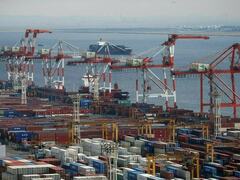


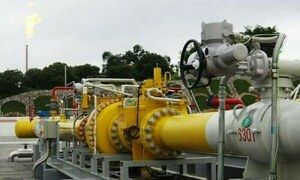
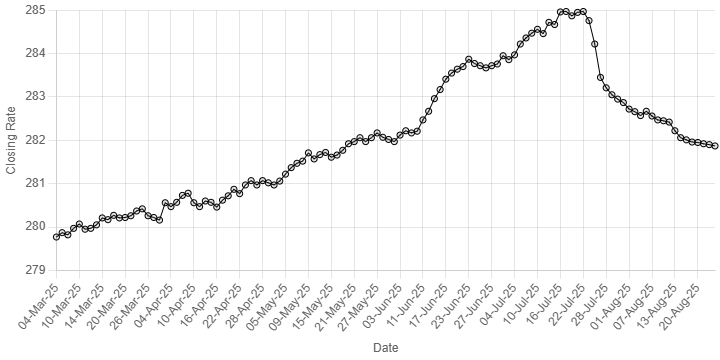

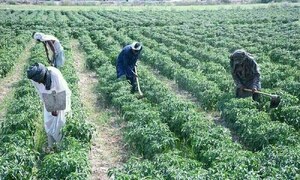






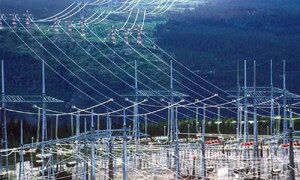
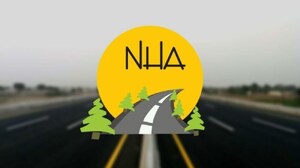

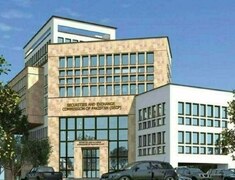


Comments
Comments are closed.